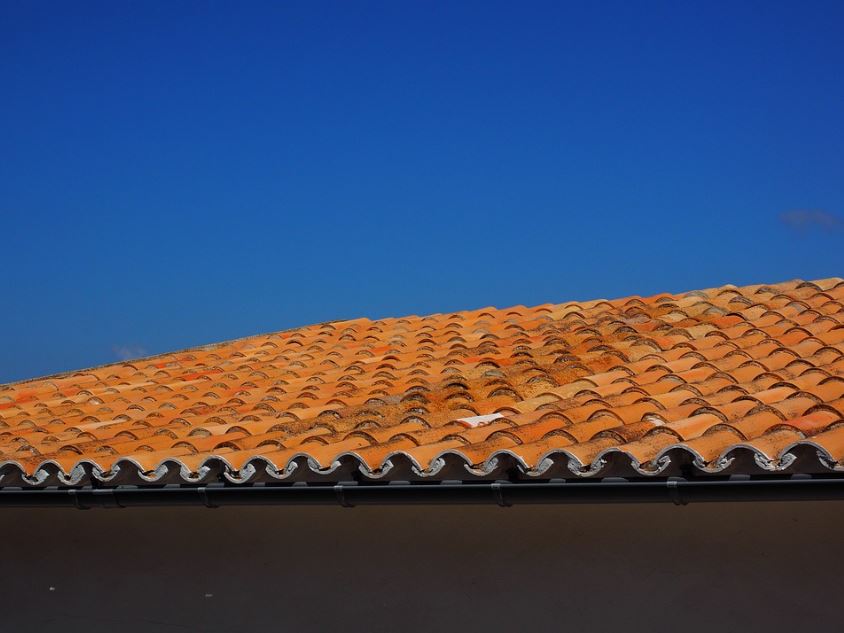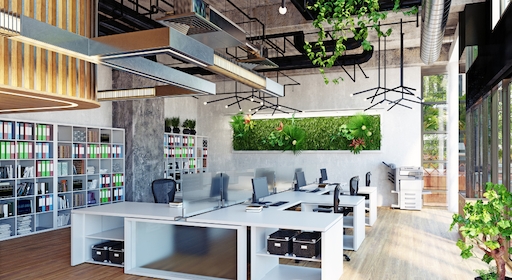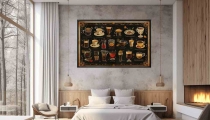

7 Stones Used For Building Construction! Mar 28, 2021


7 Tips For Installing Composite Decking Faster Mar 27, 2021



Why All the Celebrities Are Buying Homes in Portugal Mar 24, 2021


Renovation Tips To Keep Your Home Cool During Summer Aug 07, 2020



Top Roof Repair Tips You Should Know Mar 13, 2020

Tips for Choosing the Right Garage Door Size Mar 13, 2020
Flat Roofs For Home Building Projects: Things To Consider
Nov 24, 2016 10:02
If you’re building a house from scratch, or just adding an extension onto your home, then there’s going to be a wide range of decisions you’re going to need to chew over. Sourcing labour and materials alone can be a real hassle, as you’ll always be aiming for the perfect balance between price and quality. Another big decision is going to be the choice between a pitched or flat roof. If you’re considering using a flat roof for your project, here are some of the big factors to consider.

Image from Pixabay
If you were on the fence about the roof in your project, I hope this post cleared some things up!
Image from Pixabay
Price
Because flat roofs are, well… flat, they’re much easier to install. This makes it much easier for contractors to navigate through the roofing process and get it out of the way faster. This, of course, means that you’ll have to spend less on labour costs. Another advantage in terms of price is that it’s much cheaper to insure a roofing firm that’s installing a flat roof, as they have less chance of falling off than pitched designs. Because they don’t need engineered trusses and rafters, flat roofs are also more cost-effective when it comes to material costs. If price is a big factor in your building project, then a flat design may be the way to go.Lifespan
Although flat roofs are certainly cheaper to erect, they don’t usually last as long as pitched roofs. While flat roofs always have a slight slant to drain rainwater, they drain much slower than a pitched roof, which can place a serious strain on them. This can make their lifespan as short as ten years. Even if that’s longer than you were intending the building to be around for, going with a flat roof can make it much harder to sell the property on, as prospective buyers are likely to be aware of this drawback. Although erecting flat roofs is much cheaper, the owner risks having to pay for flat roof restoration and other expensive maintenance. On the other hand, many pitched roofs can have warranties that last up to 50 years. Whatever the building’s intended use is, the lifespan of the roof is an important factor to consider.Heat
Flat roofs are great at absorbing heat. Due to having no sheer angles, the whole thing will be exposed to the sun all day long, heating the surface of the roof and the living space inside. This may sound like luxury if you live in a particularly cold area. However, you need to look at the big picture. The sun is at its lowest in the winter, so the heating you’ll gain from a flat roof is going to be minimal compared to the cost of running the air conditioning all day when you go through a heatwave and feel like you’re living in an oven! Sure, you might be able to scrape a few pennies off of the heating bill by going with a flat roof. When you zoom out, however, this factor is one big disadvantage.If you were on the fence about the roof in your project, I hope this post cleared some things up!

A well-designed workspace is more than just a place to get things done—it’s an environment that influences productivity, comfort, and even creativity. Whether you’re setting up a home office, launching a startup, or upgrading a corporate workspace, choosing the right Brisbane office furniture can make all the difference. Read more
ARCHITECTURE
furniture
Mar 17, 2025 22:33

Warm tones of Cozy Vibe and rustic wall art
Something happy about this cozy home. From cozying up with a blanket as the temperature drops to sitting in the sunlight while enjoying your next cup of coffee; a warm and inviting atmosphere feels like your safe haven. There is one of the simplest and most effective ways to achieve this, too, which is to use warm tones and rustic wall art in your decor. Besides, these elements are other character brims and will offer your space the comforting, homey touch. If you’d like to bring those cozy vibes home, here some ways you can use warm colors and rustic wall art to create a cozy atmosphere. Read more
Something happy about this cozy home. From cozying up with a blanket as the temperature drops to sitting in the sunlight while enjoying your next cup of coffee; a warm and inviting atmosphere feels like your safe haven. There is one of the simplest and most effective ways to achieve this, too, which is to use warm tones and rustic wall art in your decor. Besides, these elements are other character brims and will offer your space the comforting, homey touch. If you’d like to bring those cozy vibes home, here some ways you can use warm colors and rustic wall art to create a cozy atmosphere. Read more
ARCHITECTURE
Jan 31, 2025 10:35

A home that’s cozy yet curated is an art form in itself and what more beautiful way than mixing modern and vintage wall art for an eclectic decor style. When mixing these opposing aesthetics together, they can create depth, character and timeless quality to your space. But, it’s a matter of finding the right balance and that takes careful planning. In this guide you are going to learn how to use your historical native skills, and put them into a lesson that is more modern but still vintage wall art. Read more
ARCHITECTURE
Jan 31, 2025 10:29
Copyright © Fooyoh.com. All rights reserved. User Agreement | Privacy Policy | Contact us
| Advertising
| About us
| Careers














































